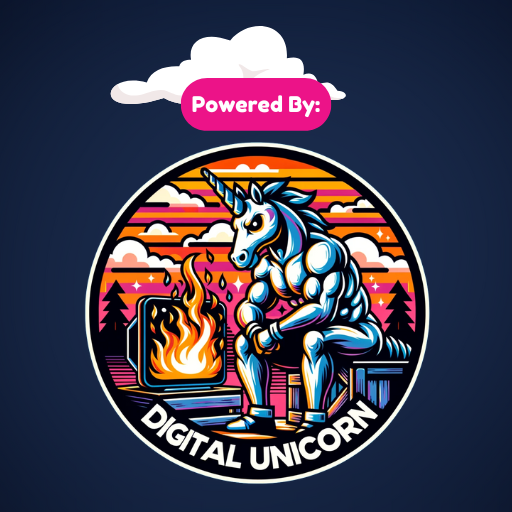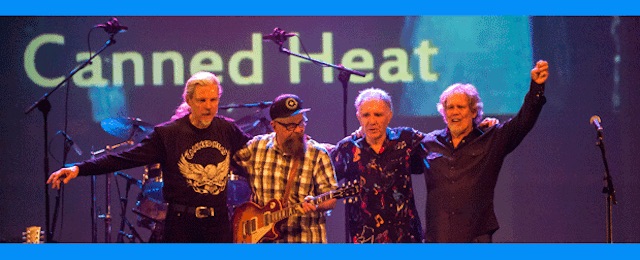
When Canned Heat’s Fito de la Parra started playing drums as a child, he had no idea where it would take him. He only knew that he loved playing. Ultimately, his musicianship brought him to Los Angeles, where he became the drummer in the house band at the Tom Cat Club in Torrance, where he backed some of the top rhythm and blues artists of the time such as Etta James, the Platters, T-Bone Walker, Ben E. King, the Coasters and Mary Wells. In 1967 he joined Canned Heat and the rest is history, with hits such as Going Up the Country, Same All Over, On the Road Again and Let’s Work Together. Going Up the Country was not only a major hit for Canned Heat, but based upon it’s connection with both their performance at Woodstock and eventually it’s being featured in the chronicle of the event, the Woodstock movie, became one of the best known songs of the ’60s. Fito de la Parra spoke with me back in May 2015 about his background, his years playing with Canned Heat and Canned Heat’s place in musical history.
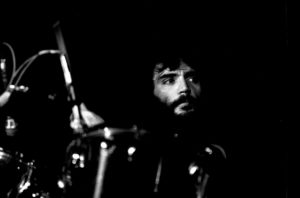 Q: Fito, how did you go from playing Latin American rock and American rock covers to Canned Heat’s version of the blues?
Q: Fito, how did you go from playing Latin American rock and American rock covers to Canned Heat’s version of the blues?
Well, part of that was my father. My father was an admirer of the U.S. and its culture and American music. I grew up as a middle-class kid in Mexico City, which is pretty much like a middle-class American kid here. We were not members of agricultural families, braceros or any of that. Basically my father was a cosmopolitan man and he loved jazz music. He used to take me to watch all the old movies such as the Benny Goodman Story, the Gene Krupa Story the Glenn Miller Story, all those famous movies about jazz music from the ’40s and ’50s that came out. That’s how he first turned me on to music. Then I started playing drums, I started playing with garage bands with kids who were in love with this great rock and roll music that was coming up from the U.S.
That’s how I got turned on to play and then my dad also took us, the whole family, to see Bill Haley and the Comets for the first time when he came down to Mexico City. All these different experiences when I was 10, 11 years old, had a very big influence on me. He always liked to encourage me to play music and to be into music because he figured that would keep me out of trouble when I became a teenager. He was right, because many of my friends were already joining gangs and becoming rebels while I was already playing music. I was still part of the scene but in a very special place as a musician and not as an outlaw. That was the beginning of my love towards American music and American culture—it came from my father.
Q: How did you get into the blues?
Later on of course I had my first American girlfriend who turned me on to the blues for the first time. I was playing basically pop rock, Top Ten Rock which we’d been getting from the U.S. but no blues and no rhythm and blues. That’s when I met this girl and she gave me my first James Brown record, my first Jimmy Reed record and that’s when I got really turned on to the blues. I never came back to pop music or rock n’ roll. Shortly thereafter I married an American girl and moved to the U.S. in 1967, ’66, sometime around that, and it was only a matter of a few months when I was hired to play with Canned Heat, which was probably the best thing that ever happened to me.
By the time I arrived in this country I’d already had five or six year’s experience in show business. As a matter of fact, one of the reasons why Bob Hite and Alan hired Larry Taylor, Henry Vestine and myself was because we were professional musicians. Bob and Alan wanted to surround themselves with professional musicians because they were not. They really didn’t understand the business. I was already doing movies and TV shows and had been with managers and agents and I was in popular groups in Mexico before I came to the U.S. Larry Taylor was too, so we had that experience to bring to the band besides our capacity to play an instrument. When you are in the music business, you have to be aware of the business too. Even though we may not like it, we have to be part of it. Most musicians like the show, not the business! But you have to deal with it.
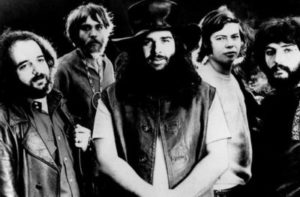
Q: What was your impression when you were asked to join Canned Heat?
I loved it! I’d already gone to the Topanga Corral to see them—you have to keep in mind, Canned Heat was not a famous band then, it was just starting to come up as Los angeles’ answer to Paul Butterfield who headed a Chicago blues band. I was already into the blues and rhythm and blues music and I went to see them. They were having some problems with their original drummer, Frank Cook, who was with them for about a year and a half. They decided to fire Frank and hire somebody else and they offered me the job and I was very happy to receive that offer because I liked the band. My answer was, when the manager came and asked me, ‘How would you like to play for Canned Heat?’, my answer was, ‘I was born to play with Canned Heat!’. I gave him that answer and showed him a lot of commitment towards the band. I was not your typical musician that the first thing the asked was ‘How much am I gonna make”’. I didn’t really care about that because I knew Canned Heat was really not making that much money, but I knew they were playing something valid, something that counts, music with heart and soul. I didn’t think they were ever going to be famous, but I knew they were going to be important, regardless. So that’s what made me very happy to join this bunch of guys.
Q: What were Bob Hite and Alan Wilson like?
They were both excellent musicologists, record collectors and lovers of music in general. Their personalities were very different. I mentioned in my book that they reminded me of Laurel and Hardy. You know, the fat guy always messing with the little guy and telling him ‘do this, do that’ and the other guy is just trying to make it there. So like Laurel and Hardy they were like that, they were very much different but both loved the same kind of music, were highly educated, especially Alan. Alan Wilson had a good music education in Boston, he grew up there and played the trombone, he was a fantastic harmonica player and guitar player. Bob was really not a performer, he was mainly a music lover and a record collector, but as the time went on and they made a decision to form a band, he became a singer. They both had a wonderful relationship, they both loved each other and were both very much the father-founders of the Canned Heat band and the Canned Heat concept.
Q: The whole band seemed more about the music than choreography and creating a show…..
Well there was a lot of improvisation going on which was one of the characteristics of the music of the late ’60s, what we called the Renaissance of music. The explosion that happened with people like Jimi Hendrix, Janis Joplin, the Grateful Dead, ourselves and many others like the Doors. We were improvising, we were trying to make the best music possible without commercial consideration which is exactly the opposite of what is going on with music now in our time.
Q: The band lost several major musicians over the years. How did the rest of you hold things together?
Well you know, we have had some of the greatest musicians in the blues circle and I’m so proud and so privileged to have played with them. Of course it would have been great if we could have kept the original band together these guys were very brilliant and very tragic personalities and sometimes I guess the brilliance goes together with the tragedy and the excesses. That’s the reason why we lost our father-founders, our original members but we’ve managed to hire the best musicians available and to continue the tradition. The Canned Heat Band by now is an American institution.
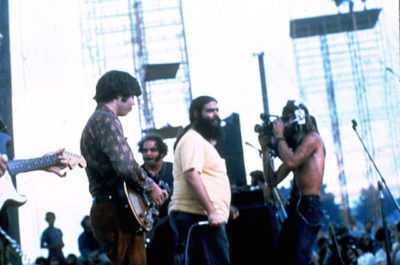
Q: Going Up the Country became one of the anthems of the Woodstock Generation. What did the band think of that?
When Alan came to us and we were at a rehearsal, we were at the rehearsal and we’d already had a hit record with On the Road Again, which became number one in many places and which was in the Top Ten all over the world. I’m talking about On the Road Again, the original Canned Heat version, not the Willie Nelson version that came out several years later. So we already had a hit record in 1967 and Alan comes to the rehearsal and starts playing this little lead on the guitar and starts singing, ‘Going up the country, baby don’t you wanna go?’. I knew of the original version, which was recorded in Texas in 1928 by a one-man band named Henry Thomas. The original is not called Going Up the Country, it is called Going Down South and it has different lyrics but it does have that little flute part and the guitar part.
Alan started singing ‘Going up the country, baby don’t you wanna go?’ and every one of us just looked at each other and said ‘My God, that’s a hit record!’. It was undeniable! We were not looking to be a hit band, not a commercial band, but it just happened that the song had a natural feeling and that natural appeal and it fit just right with the era and especially with the Woodstock Festival which was about to happen in a few days or months after we’d recorded that song. So we were very impressed with it, we loved it and we recorded it right off. I think it was a first or second take, just like almost everything we did.
Q: It’s become a song that’s still relevant today……
Absolutely, its been in a lot of movies and every time you think about Woodstock that’s the song you think of—that’s the one, the theme. Going Up the Country—-remember, Woodstock is up in the Catskills Mountains, in upstate New York. So to go to Woodstock, you were going ‘up the country’. Some people, they say ‘Why don’t you do that song as ‘Going Down the Country’, but I always say, ‘No No No! It’s not going down the country, it’s going up the country’, up to the Catskills Mountains’.
Q: Once Going Up the Country became identified with the whole Woodstock Generation thing, did the band think anything of it—-what kind of impression did you get from that?
Well we were delighted when it became a big hit record and of course we were very happy to be part of the Woodstock family, the Woodstock Nation as they call it. Aside from that, it was something we were not ready for, because we never expected that a blues band would become popular. Paul Butterfield was around, John Mayall and Alexis Korner were the pioneers of white blues and none of them were able to put blues-oriented music on the Top Ten. We were white and we were doing that so that was very important to us because it was part of our nation, to propagate, to make blues music popular, especially with white audiences that were not familiar with its style. And we were able to do it! I mean, look at the situation now, look at how many blues societies there are, look at how many blues festivals, how many blues bands? In spite of blues not being mainstream or popular like what we know of pop music, blues is here to stay because it’s an American art form and is just a wonderful, simple, creative music that appeals to our primal instincts and that’s what makes it very valid.
Q: Woodstock was an incredibly important festival. Did you think that show was important to the band and music in general at the time?
Yes, of course we knew it was going to be important to our career, but by the time we played at Woodstock we were already a very famous band because of the two hit records and just the fact that there was an explosion going on of interest in this kind of music and the musicians were just putting out some great sounds. You cannot just disregard that era of music as part of the way it was. You can disregard the disco music of the ’70s or the ’80s this or that, it goes almost like trends. I don’t think the music of the ’60s and that renaissance of music was like a trend. It was truly a revolution.
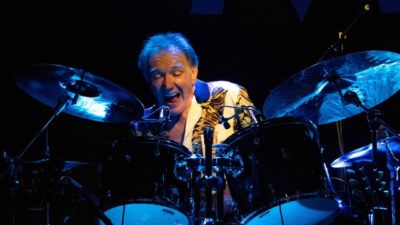 Q: Your drumming is very understated—-you just keep the time and keep things going. How’d you develop such restraint?
Q: Your drumming is very understated—-you just keep the time and keep things going. How’d you develop such restraint?
That was part of listening to other drummers that I admired too. Like blues drummers who were simple like Fred Binno or the jazz drummers that I listened to like Gene Krupa, Buddy Rich and Art Blakey. They were my influence, they were the people I listened to when I was a kid. I found my style out of their styles so my drumming is a combination of all that and stuff that I learned myself. We used to improvise and be a little more freer than we are now, but that doesn’t mean we aren’t free now. We still play along the song, you know each song deserves—you know when you’re playing drums and you’re just playing a beat, you have to play with the song and sort of add little things here and there that add character to the song. Not just to play and to show off , you cannot be too busy and just showing off, you have to complement the other players, complement the solo players, the singer—the most important part of course—and work with the bass player. The bass is really the tempo of the music, it’s not the drums. The bass is the tempo and the drums play around the bass.
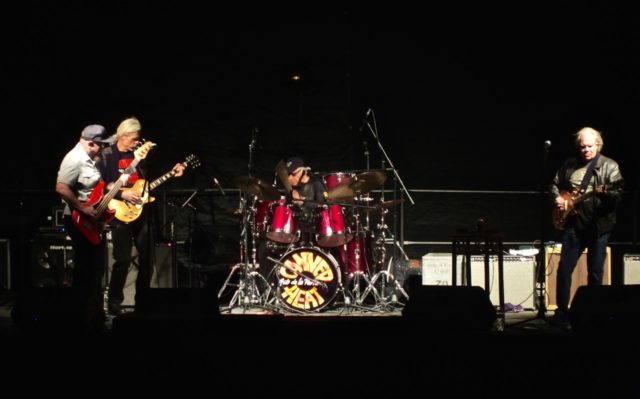
Q: How’s the current lineup of the band doing?
I’m happy to have Larry Taylor with me because he is one of the original members and he’s also another blues lover. John Paulus is an excellent musician, excellent guitar player and bass player and he was playing previously with John Mayall about six years, before we stole John from him. (laughs). We didn’t steal him I guess, he’d already left that band. We also have Dale Spalding as a front man and singer and he’s an excellent harmonica player. We’ve been doing really good, I mean considering the time we’ve been around, we’re celebrating the 50th anniversary of the band’s existence. I’ve been in the band 48 years and Larry too, so if you’re considering that, there’s a lot of demand for us. We are getting offers all the time and some of the offers are for a lot of money, more than we’ve ever made. So it’s good to know that we’re recognized, even in our later years for something important.
Q: Thanks, Fito for so much good music!
Fito de la Parra is not only Canned Heat’s drummer, but also serves as their historian. He has written a book called “Living the Blues” which documents the story of Canned Heat, their place in history and their story of “Music, Drugs, Death, Sex and Survival”. Now in it’s third edition, the popular book with a marvelous insight into one of the major groups that helped define blues music is available at major bookstores, online at Amazon and also directly from the band’s website, www.cannedheatmusic.com. Signed editions of the book are also available through the band’s website.







